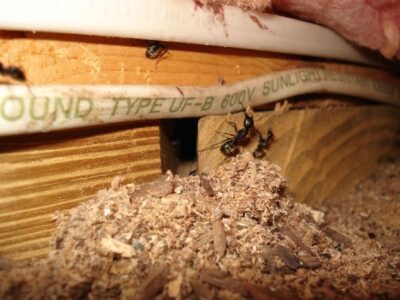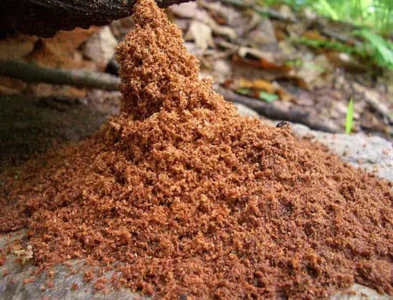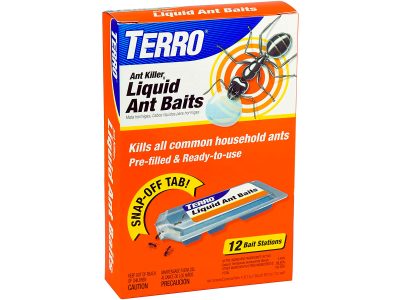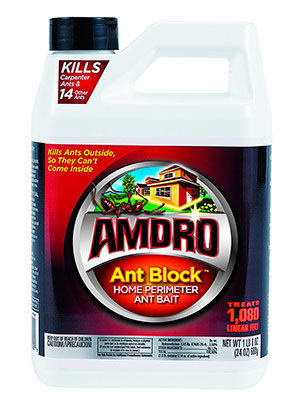Correctly identifying whether you have carpenter ants vs termites is crucial for homeowners facing wood-damaging pest infestations. While both insects can cause significant structural damage to your property, they behave differently, require distinct treatment approaches, and pose varying levels of threat to your home. Termites cause about $5 billion in damage to U.S. structures every year, making accurate identification essential for protecting your investment and choosing the most effective elimination strategy.

- Understanding the Threat: Why Proper Identification Matters
- Physical Identification: Key Differences Between Carpenter Ants and Termites
- Damage Patterns and Signs of Infestation
- Behavioral Differences and Activity Patterns
- Geographic Distribution and Species Variations
- Treatment Approaches: Carpenter Ants vs Termites
- Frequently Asked Questions
- Conclusion
Understanding the Threat: Why Proper Identification Matters
Both carpenter ants and termites pose significant threats to wooden structures, but understanding their differences is essential for effective treatment and cost management. According to the National Pest Management Association, termites cause $5 billion in property damage each year , while carpenter ants cause substantial but typically less immediate damage to homes across North America.
Speed of Damage
Termites can cause massive structural damage in 6 months to 2 years, while carpenter ants typically take several years to create significant problems.
Financial Impact
Homeowners insurance rarely covers pest damage, making prevention and early treatment crucial for avoiding out-of-pocket expenses.
Structural Integrity
Both pests can compromise your home’s structural integrity, but termites pose a more immediate threat due to their wood-eating behavior.
Physical Identification: Key Differences Between Carpenter Ants and Termites
The most reliable way to distinguish carpenter ants from termites is through careful examination of their physical characteristics. These differences remain consistent across species and can help you make an accurate identification even without professional expertise.
Body Shape and Structure
| Feature | Carpenter Ants | Termites | Identification Tips |
|---|---|---|---|
| Waist | Narrow, pinched waist (petiole) | Broad, uniform waist | Most obvious difference – ants look like they have a “belt” |
| Body Segments | Three distinct segments: head, thorax, abdomen | Two main segments: head and elongated body | Ants have clear separation between body parts |
| Antennae | Elbowed (bent) with one node | Straight, bead-like appearance | Ant antennae have a distinct “elbow” bend |
| Head Shape | Heart-shaped, larger relative to body | Rounded or cone-shaped | Carpenter ant heads are more pronounced |
Wing Characteristics (Swarmers Only)
Both carpenter ants and termites produce winged reproductive members called swarmers during certain seasons. These winged forms are often the first sign homeowners notice of an infestation.
Carpenter Ant Wings
Front wings longer than rear wings, with visible veining and more durable construction. Wings remain attached until deliberately removed.
Termite Wings
All four wings equal in length, fragile and translucent. Wings break off easily and you’ll often find discarded wings near infestations.
Size and Color Variations
| Characteristic | Carpenter Ants | Termites |
|---|---|---|
| Worker Size | ½ inch to ⅝ inch (12-16mm) | ¼ inch to ½ inch (6-12mm) |
| Queen Size | Up to 1 inch (25mm) | Up to 4 inches (100mm) |
| Common Colors | Black, dark brown, red, yellow, or combinations | Cream, white, light brown, dark brown (varies by role) |
| Swarmer Colors | Black or brown with reddish-brown wings | Brown bodies with milky or smoky wings |
Damage Patterns and Signs of Infestation
Understanding the different types of damage caused by carpenter ants versus termites can help you identify which pest you’re dealing with and assess the severity of the problem.
Visual Damage Comparison

Carpenter ant galleries are smooth and clean, resembling professionally sanded tunnels.

Termite damage shows rough, irregular patterns often mixed with mud and debris.

Carpenter ant frass looks like fine sawdust, while termite droppings are pellet-shaped.
Carpenter Ant Damage Characteristics
Carpenter ants don’t eat wood—they excavate it to create nesting galleries. Carpenter ants don’t actually eat your wood, unlike termites. Instead, they hollow out the area and discard the wood outside of their galleries .
- Smooth, clean galleries: Carpenter ant tunnels appear polished and smooth, as if sanded
- Frass (sawdust) piles: Fine wood shavings and debris found near nest entrances
- Kick-out holes: Small openings where ants remove excavated material
- Gradual progression: Damage develops over months to years
- Moisture preference: Initial damage usually occurs in damp or previously damaged wood
Termite Damage Characteristics
Termites consume wood as their primary food source, eating the cellulose within wooden structures. Subterranean termite damage can usually be compared to water damage due to the high moisture levels .
- Honeycomb patterns: Irregular tunnels following wood grain patterns
- Mud tubes: Pencil-thick tubes connecting soil to wood sources
- Hollow-sounding wood: Tap test reveals empty spaces within wooden structures
- Rapid progression: Significant damage can occur in 6 months to 2 years
- Water damage appearance: Wood appears wet, darkened, or warped
Behavioral Differences and Activity Patterns
Understanding the behavioral differences between these pests can help with identification and treatment planning.
Habitat and Nesting Preferences
| Aspect | Carpenter Ants | Termites |
|---|---|---|
| Primary Habitat | Moist, decaying wood structures | Underground colonies (subterranean) or dry wood (drywood species) |
| Moisture Requirements | Require consistent moisture for colony survival | Varies by species – subterranean need soil contact |
| Colony Structure | Parent colony outdoors, satellite colonies indoors | Single large underground colony or multiple galleries in wood |
| Visibility | Workers often visible foraging for food | Rarely visible except during swarming season |
Feeding Habits and Diet
Carpenter Ant Diet
Omnivorous scavengers eating honeydew from aphids, plant juices, insects, and household foods. They don’t consume wood.
Termite Diet
Herbivorous cellulose feeders consuming wood, paper, cardboard, and other plant-based materials continuously.
Geographic Distribution and Species Variations
Understanding where these pests are commonly found can help assess your risk level and inform prevention strategies.
Carpenter Ant Distribution
Carpenter ants are commonly found across the United States, with significant populations in the Pacific Northwest, Northeast, and Midwest regions . They thrive in areas with abundant moisture and wood sources.
Termite Distribution
Termite distribution varies significantly by species:
- Subterranean termites: Found throughout the continental United States except Alaska
- Drywood termites: Primarily in southern states, California, and Hawaii
- Dampwood termites: Pacific Northwest and humid southern regions
Treatment Approaches: Carpenter Ants vs Termites
Treatment strategies differ significantly between these pests due to their distinct behaviors and biology.
Carpenter Ant Treatment Methods
DIY carpenter ant removal is possible but difficult , with professional treatment often providing better long-term results.
Baiting Systems
Slow-acting insecticide baits carried back to colonies, eliminating entire nests including queens.
Perimeter Treatments
Non-repellent insecticides applied around structure foundations and entry points.
Direct Nest Treatment
Targeted application of dust or liquid insecticides directly into nest cavities.
Termite Treatment Methods
Termite treatment typically requires professional intervention due to the complexity and specialized equipment needed.
Soil Treatments
Liquid termiticides applied to soil around foundations creating protective barriers.
Bait Station Systems
In-ground monitoring and baiting systems for ongoing colony elimination.
Fumigation
Whole-structure treatment for drywood termites using tenting and gas application.
Frequently Asked Questions
How can I quickly tell carpenter ants from termites?
The fastest way to distinguish them is by looking at the waist. Carpenter ants have a narrow, pinched waist that clearly separates their body segments, while termites have a broad, uniform waist with no clear separation between body parts.
Additionally, if you see the insects’ antennae, carpenter ants have elbowed (bent) antennae while termites have straight, bead-like antennae.
Which pest causes more expensive damage to homes?
Termites generally cause more expensive damage because they actually eat wood as their food source, consuming it continuously 24/7. They can cause structural damage worth thousands of dollars in just 6 months to 2 years.
Carpenter ants excavate wood for nesting but don’t eat it, so their damage progresses more slowly over several years. However, both pests require prompt treatment to prevent costly repairs.
Do carpenter ants and termites ever infest the same home?
Yes, it’s possible to have both pests simultaneously, though this is relatively uncommon. Carpenter ants sometimes feed on dead termites, so a termite infestation can actually attract carpenter ants to the same area.
This is why professional identification is crucial – mixed infestations require different treatment strategies for each pest type.
Will homeowners insurance cover carpenter ant or termite damage?
Generally, no. Homeowners insurance typically doesn’t cover damage from carpenter ants or termites because insurance companies consider these infestations preventable through regular maintenance and inspections.
In very rare cases, if pest damage causes a secondary covered event (like termites chewing through electrical wiring that starts a fire), the fire damage might be covered, but not the pest damage itself.
How long does it take to eliminate carpenter ants vs termites?
Carpenter ant elimination typically takes 2-6 weeks with proper baiting systems, as the bait needs time to reach the entire colony including the queen. Termite treatment can show results in 1-3 months for bait systems, or immediately with liquid soil treatments.
However, monitoring continues for both pests for at least a year to ensure complete elimination and prevent re-infestation.
Can I treat carpenter ants or termites myself?
While DIY treatments for carpenter ants are possible using baits and sprays, they’re often less effective than professional treatment because it’s difficult to locate all nests and ensure complete colony elimination.
Termite treatment almost always requires professional intervention due to the specialized equipment needed for soil treatments, the complexity of termite biology, and the potential for significant structural damage if treatment fails.
What time of year are these pests most active?
Carpenter ants are most active during warm months (spring through fall) and typically swarm from May-August in eastern regions or February-June in western areas. They’re largely inactive during winter in northern climates.
Termites can be active year-round in suitable conditions, but swarming typically occurs in spring. Subterranean termites continue feeding activity underground even in winter, making them a constant threat.
How can I prevent both carpenter ants and termites?
The best prevention strategy addresses moisture control, which attracts both pests. Fix leaks promptly, ensure proper drainage, maintain gutters, and improve ventilation in damp areas like basements and crawl spaces.
Additionally, eliminate wood-to-soil contact, trim vegetation away from your home, remove wood debris from around foundations, and schedule annual professional inspections to catch problems early.
Conclusion
Successfully distinguishing between carpenter ants and termites is essential for protecting your home from costly structural damage. While both pests pose significant threats to wooden structures, understanding their key differences—from body shape and wing characteristics to damage patterns and treatment requirements—enables you to respond appropriately and effectively.
Remember that termites generally pose a more immediate and expensive threat due to their wood-eating behavior, potentially causing thousands of dollars in damage within months. Carpenter ants, while less immediately destructive, still require prompt attention to prevent long-term structural issues and colony expansion.
The most critical factors for successful pest management are early identification, prompt professional treatment, and ongoing prevention through moisture control and structural maintenance. Since homeowners insurance rarely covers pest damage, investing in prevention and early intervention provides the best protection for your home and budget.
Regular monitoring, annual professional inspections, and maintaining a dry, well-ventilated home environment remain your best defenses against both carpenter ants and termites. By staying vigilant and addressing conducive conditions before they become problems, you can keep these destructive pests away from your property for years to come.



